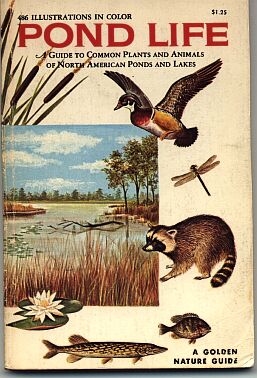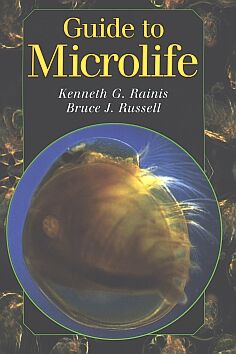In the Rahway River, in central New Jersey, lives an interesting annelid. It is called Dero vaga, a creature that constructs a house made of various bits of debris. What is this debris? Pieces of old ostracod shells, spider eggs, hollow twigs, and other buoyant objects. The photos directly below shows the distinct double tail protruding from its house-like conglomeration.
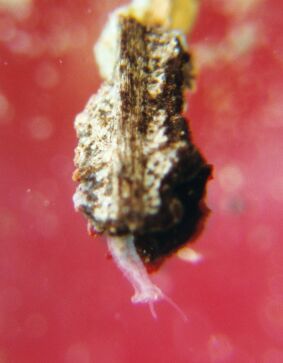
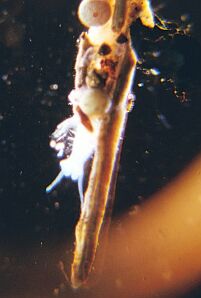
Below, you can see the head of this Dero vaga protruding as the critter sucks onto the coverslip. Then Dero vaga contracts, pulling its house along the way. As the body stretches and contracts to move, the creature feeds on the surface particles.
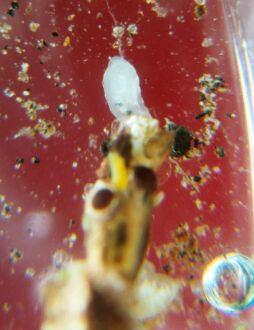
How did I figure out that this unusual creature was called Dero vaga? I had exhausted my search though various books about microlife, and I could not find any match-ups. Then, while looking through my book called Pond Life – which is a book mainly about bigger creatures like duck and frogs, I actually found a good description of Dero vaga!
Take a look at the below photo and inspect the Dero vaga’s house carefully. You will see a part of the house that uses a Bryzoan stratoblast from Pectinatella in the center of photo.
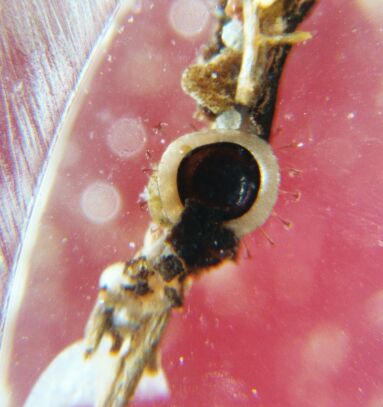
Are you wondering how I took these photos through the microscope?
I used two techniques. First – I used electronic flash, by setting up my flash off to the side of the microscope stage. Flash is in position (A). Under the stage of the microscope is a special semi-silvered mirror (B) which allows some light to come through it from the microscope illuminator. This allowed me to see the slide and specimen to position and focus. (TIP: You could mount at an angle the lens from mirrored sunglasses.) At the top (C) is my eyepiece and camera.
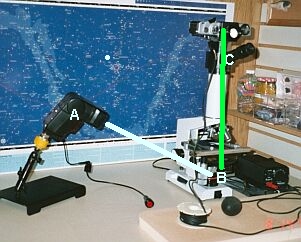
You can also use a prism cube which will allow you to see straight down through it, yet this will also reflect a flash positioned at a 45 degree angle. In the below photo, I’ve used a single laser beam to show how the prism splits the beam. By placing a prism on your base illuminator, your specimen is fully lit, yet you can bounce a flash through the prism as well. A 20mm prism cube is available on Amazon here. Learn more about beam splitters here.

The other thing I did was use a Rheinberg center stop filter (which I made myself) to give me a pretty colored background. My photos show either the red center stop or the black center stop (called darkfield). More about this here.
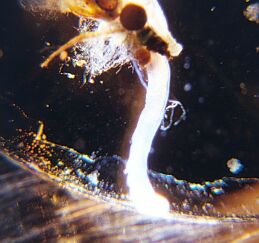
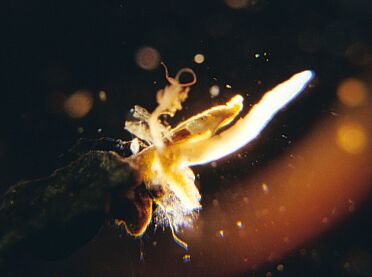
All photos were taken with Electronic Flash with Rheinberg Illumination center stop (red or black). I used a 7X eyepiece and 2.5X objective = Magnification: x17.5
